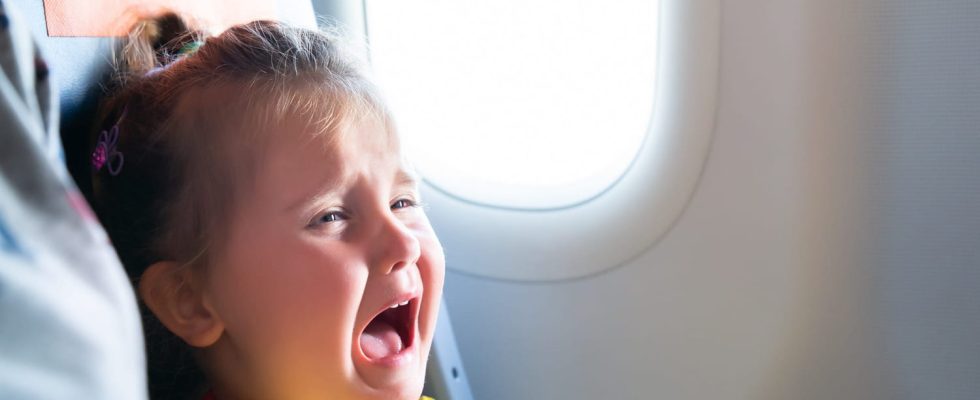A mathematics professor at the University of Oxford in the United States has developed a formula to anticipate children’s seizures on board a plane and thus travel safely.
When traveling by plane, parents often fear having to suddenly deal with their children’s crying or tantrums on board. For other passengers too, it is a moment that is particularly dreaded. The proof is that on social networks, we regularly find videos shared by exasperated travelers, unknowingly showing children in crisis. Which is obviously debated in the online comments. What if we told you that a simple mathematical formula could prevent this type of situation, or at least delay it as long as possible?
The formula for preventing a child’s seizure on a plane
An Oxford University mathematics professor, Dr Tom Crawford, worked in collaboration with broker Asda Money to find when exactly a child’s meltdown occurs on board a plane. According to his expertise, on average, children are most likely to be agitated after 27 minutes and 48 seconds of flight. Each attack lasts about 15 minutes.
To find this result, the specialist took into consideration the time (T) before the start of a crisis and the 4 triggering factors which are according to the parents interviewed: drowsiness (S), boredom (B), hunger (H) and noise (N). Each factor was then scored from 0 (the problem is ignored) to 10 (the problem is successfully handled). He thus concluded that “If the four main causes are addressed, that is, they score 10, the time of crisis can be delayed by up to 129 minutes, which is almost five times longer than the expected time without no intervention.” In short, this means that families and travelers can claim a flight without screaming and crying if it lasts less than 129 minutes and if parents have taken precautions in advance to reassure and calm their children.
How to prevent a tantrum from breaking out in mid-flight?
In this study, Dr Tom Crawford also reveals tips to prevent children from having seizures during the flight. According to him, “Parents should make sure their children take a 37-minute nap to overcome sleepiness.” To combat boredom, a drawing book, film or game should be offered to children during “31 minutes”. The mathematician also suggests planning a snack time of “19 minutes” and to prevent noise from bothering children, give them “music or reading for 14 minutes”. It remains to be seen whether the method is effective on any child.
